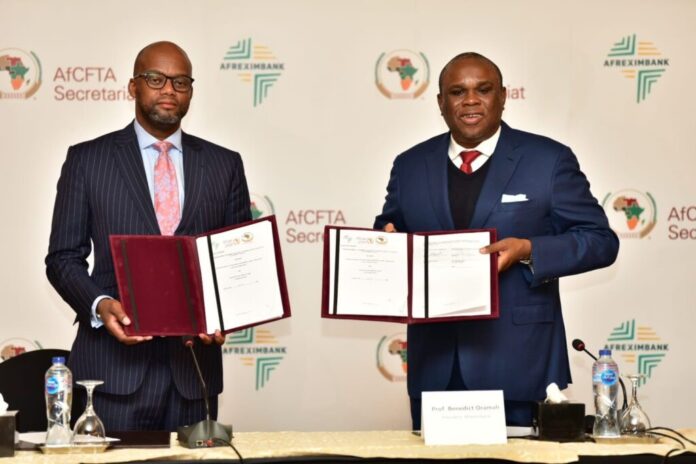
The African Continental Free Trade Area (AfCFTA) Secretariat in conjunction with the African Export-Import Bank (Afreximbank) has introduced the AfCFTA Adjustment Facility Fund to support Party States cope with the new liberalized and integrated trading environment.
It has been reported that the resources required for the Adjustment Fund over the next 5-10 years are estimated at US$10 billion.
In a recent press release by Afreximbank, it was revealed that the bank has already committed $1 billion towards the AfCFTA Adjustment Fund.
Speaking on Eye on Port, Trade Practitioner and AfCFTA expert, Louis Yaw Afful, revealed that the original concept of the Adjustment Facility fund was to cushion the category of countries who would be marginalized by the Free Trade.
“These are countries who were going to be marginalized due to their low productive capacity and could not withstand the shocks for the first years of the liberalization,” he noted.
He said the funding facility, which is contributions from member states, will not apply interest rates to beneficiaries.
The AfCFTA expert said the fund has been categorized into two, namely the general fund and the base fund.
He said the base fund in particular would be used to support countries’ efforts under the pillars of Boosting Intra Africa Trade including trade infrastructure.
According to him, the adjustment fund is in no way intended to make up for budget shortfalls of governments but would be disbursed based on merit.
Louis Yaw Afful also indicated that private sector entities most likely to benefit from this funding facility are well-structured corporations with a clear export potential.
He explained saying, “the supervisory agency of this AfCFTA in each country is the Ministries of Trade. Therefore, it is reasonable to say that Ministries of Trade will come out with plans and arrangements for the various companies under their supervision. So, it would be easier if a company belongs to an association, such as AGI, GUTA, Chamber of Commerce. Corporations, and structured groups with strong potential are going to be the target of Afreximbank.”
The AfCFTA expert also said one of the benefits of the adjustment facility is in the provision of technical assistance to governments and other AfCFTA players in the continent.
He stressed on the need to provide potential exporters market intelligence of the export viabilities of party states.
He urged African countries to capitalize on their comparative advantages within the AfCFTA trade and beyond.
“The whole idea of AfCFTA is about finding means of trading among ourselves, as Africans and how we stop exporting only the raw materials outside Africa. Why does Kenya’s coffee not find its way into Ethiopia market? This is what we are trying to change.”
“The AfCFTA secretariat will be publishing what they call Africa Trade Observatory, a website where countries will publish all the list of products they want to liberalize. In the event a country wants to change, they would have to write to the AfCFTA for a go ahead,” he added.
Louis Afful, who is the Executive Director of the AfCFTA Policy Network, hinted at the need for more financial institutions like the Afreximbank to support the Continental Free Trade.
According to him, when more banks are established with an AfCFTA orientation, interest rates on loans would be reduced to support low cost of production which would give African products competitive advantage on the world market.









